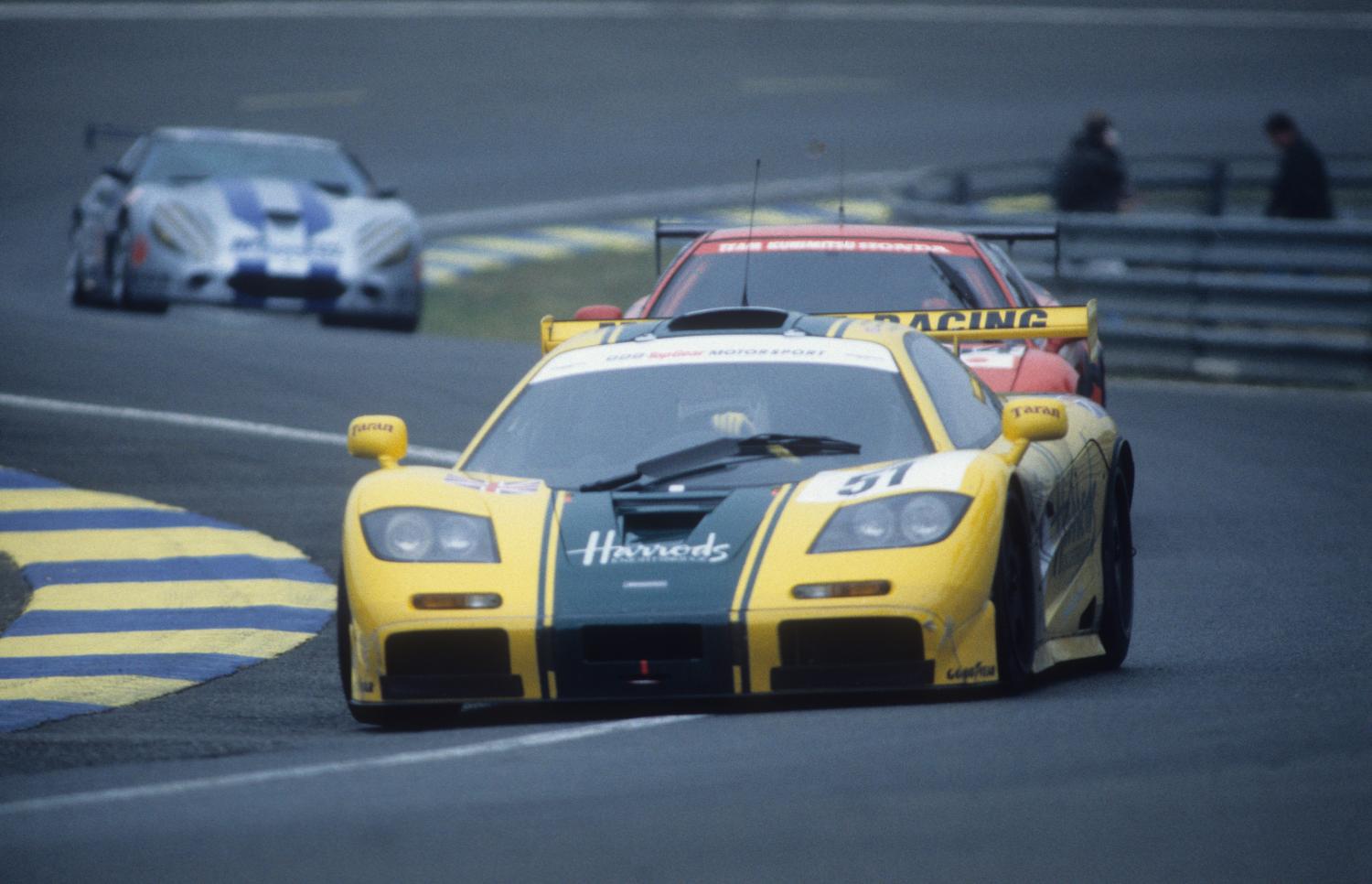17-18 June 1995 – McLaren’s triumph
A GT making its Le Mans début dominated the wet conditions to win the 1995 24 Hours. The McLaren F1 GTR, launched at the 1992 Monaco Grand Prix, held on for a very close win for Yannick Dalmas, JJ Lehto and Masanori Sekiya. It was a real triumph for the manufacturer as three more F1 GTRs finished third, fourth and fifth.
Sekiya became not only the first Japanese driver to win the 24 Hours of Le Mans, but also the first driver to get married at Le Mans (during the week before the 1987 race) and then win!
For Dalmas, the 1995 success was his third win after 1992 and ’94. A fourth was to follow in 1999 in a BMW. Lehto was the first Finn to win at Le Mans. Six other former winners figured in the top ten: Eric Helary (second), Andy Wallace and Derek Bell (third), Mark Blundell (fourth), and Hans-Joachim Stuck and Christophe Bouchut (sixth).
The only non-McLaren F1 GTR in the top five was the Courage C34-Porsche prototype in second place, the best Le Mans standing achieved by 55-year-old Mario Andretti, who shared the wheel with Frenchmen Helary and Bob Wollek.
17-18 June 2000 and 2006 – Audi and other stories
Audi’s long reign at the 24 Hours of Le Mans began in 2000 with the first of its thirteen wins in fifteen years. Leading home a superb 1-2-3 for the German manufacturer’s R8 prototype, Frank Biela, Tom Kristensen and Emanuele Pirro clinched the first of their three consecutive wins – the first crew to achieve the feat. This was, in fact, the second of Kristensen’s record nine Le Mans victories.
The seventh-placed Chrysler Viper took the GTS class win before handing over the following year to another iconic American GT: the Chevrolet Corvette. Incidentally, victorious Viper driver Olivier Beretta from Monaco later spearheaded the Corvette Racing challenge.
Six years later, on 18 June 2006, Audi’s sixth win was accomplished with the R10 TDI prototype which became the first diesel-powered car to taste success at Le Mans. Biela and Pirro were again at the wheel, but partnered this time by Marco Werner. Diesel-engined prototypes went on to another eight straight wins through to 2014, with one victory for Peugeot (2009) and seven for Audi, who also set a new distance record for the event in 2010.
Going back to the 2006 race, nine-time world rally champion Sébastien Loeb completed his second 24 Hours in second position in a Pescarolo prototype shared with fellow Frenchmen Franck Montagny and Eric Helary. Loeb then did not return to La Sarthe until 2014 when he entered his own racing team. His drivers René Rast, Jan Charouz and Vincent Capillaire took fourth place in the LMP2 class (Oreca 03R-Nissan).
The Chevrolet Corvette secured its best overall position in 2006 with the fourth place achieved by Oliver Gavin, Olivier Beretta and Jan Magnussen, which was good enough to take the GT1 class title. This 74th 24 Hours of Le Mans also saw Aston Martin make its comeback, placing three DBR9s in the top ten, in sixth, ninth and tenth positions.
Read all about the 24 Hours of Le Mans held on 17-18 June 1933 and 1939 in the first part of this mini-series.
Photo (ACO archives): Five-time Le Mans winner Derek Bell at the wheel of the McLaren F1 GTR that finished third in 1995. Bell was partnered by his son, Justin, and another former winner, Andy Wallace, who had triumphed in a Jaguar in 1988.

